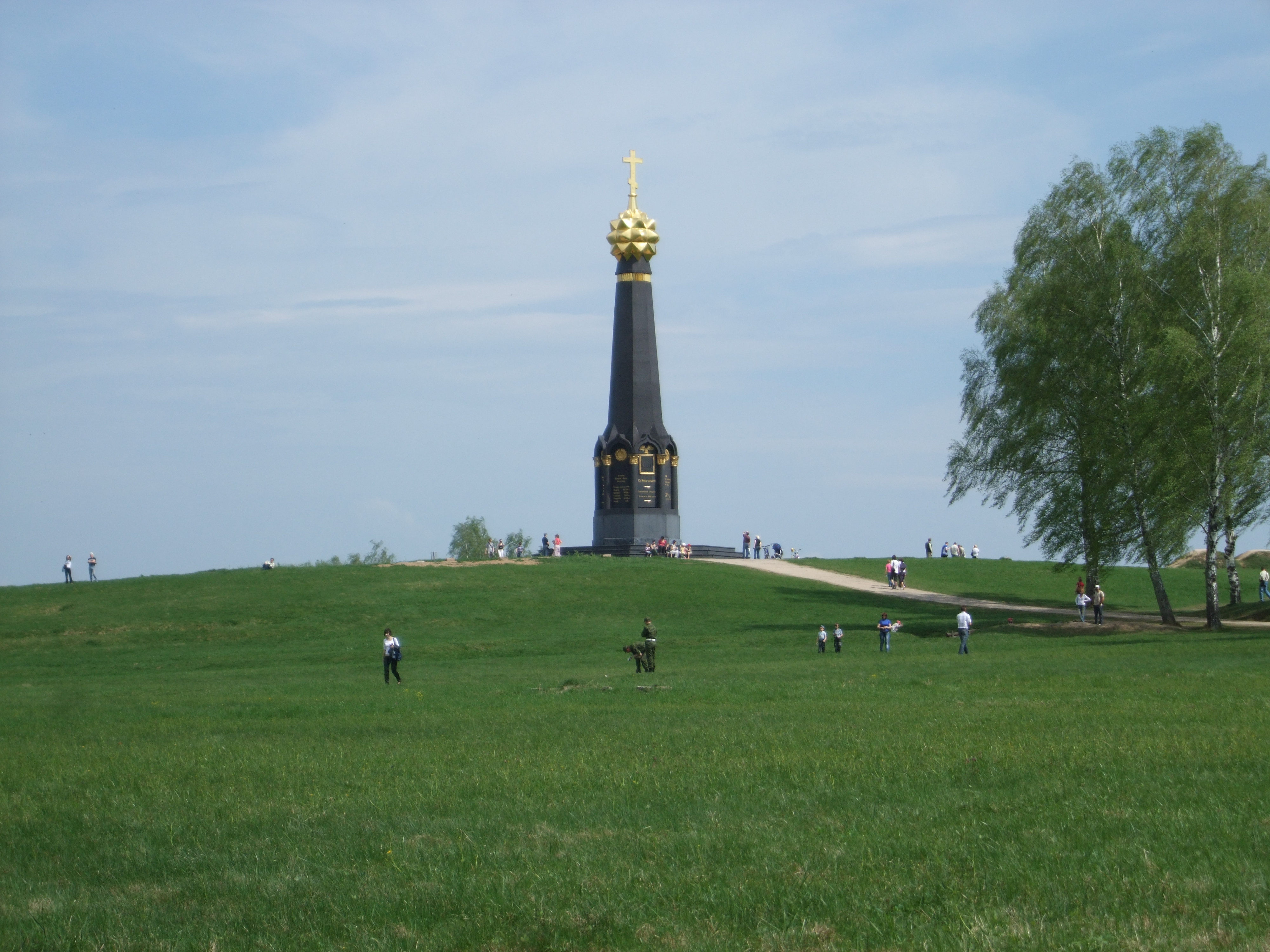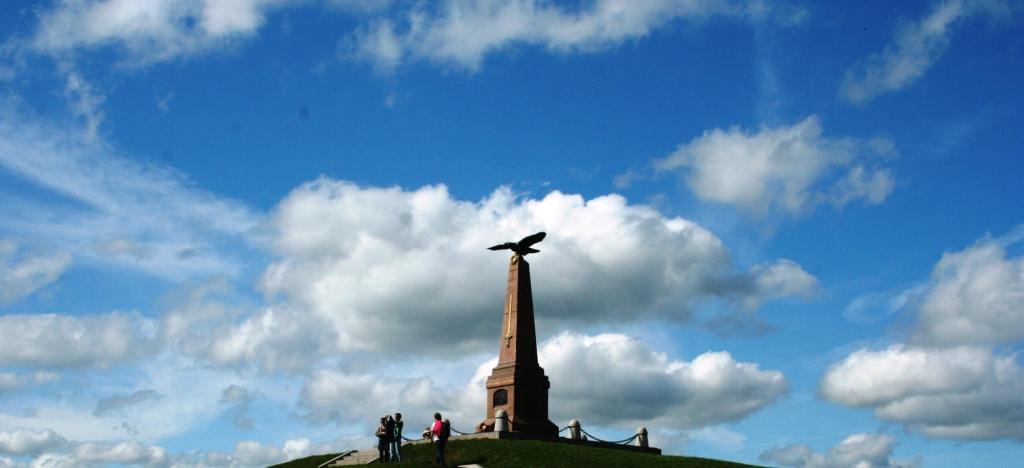Borodino (village), Mozhaysky District, Moscow Oblast on:
[Wikipedia]
[Google]
[Amazon]

 Borodino (, ) is a
Borodino (, ) is a
Official website of the State Borodino War and History Museum and Reserve
The celebration of the centennial anniversary of Victory in the Patriotic war of 1812. Emperor Nicholas II on Borodinsky celebrations 1912.
{{Authority control Rural localities in Moscow Oblast

village
A village is a human settlement or community, larger than a hamlet but smaller than a town with a population typically ranging from a few hundred to a few thousand. Although villages are often located in rural areas, the term urban v ...
in Mozhaysky District of Moscow Oblast
Moscow Oblast (, , informally known as , ) is a federal subjects of Russia, federal subject of Russia (an oblast). With a population of 8,524,665 (Russian Census (2021), 2021 Census) living in an area of , it is one of the most densely populate ...
, Russia
Russia, or the Russian Federation, is a country spanning Eastern Europe and North Asia. It is the list of countries and dependencies by area, largest country in the world, and extends across Time in Russia, eleven time zones, sharing Borders ...
, located west of Mozhaysk
MozhayskAlternative transliterations include ''Mozhaisk'', ''Mozhajsk'', ''Mozhaĭsk'', and ''Možajsk''. (, ) is a types of inhabited localities in Russia, town and the administrative center of Mozhaysky District, Moscow Oblast, Mozhaysky Distri ...
.
The village is famous as the location of the Battle of Borodino
The Battle of Borodino ( ) or Battle of Moscow (), in popular literature also known as the Battle of the Generals, took place on the outskirts of Moscow near the village of Borodino on 7 September 1812 during Napoleon's invasion of Russia. ...
that took place on 7 September 1812 as part of the Napoleonic Wars
{{Infobox military conflict
, conflict = Napoleonic Wars
, partof = the French Revolutionary and Napoleonic Wars
, image = Napoleonic Wars (revision).jpg
, caption = Left to right, top to bottom:Battl ...
during the French invasion of Russia
The French invasion of Russia, also known as the Russian campaign (), the Second Polish War, and in Russia as the Patriotic War of 1812 (), was initiated by Napoleon with the aim of compelling the Russian Empire to comply with the Continenta ...
. The Borodino Battlefield () is now part of the State Borodino War and History Museum and Reserve. The reserved area is ; the area of the protected zone is .
History
Archaeological evidence suggests that the area around Borodino was settled around 500 BC by the Finnish, and then Slavic tribes. The well-preserved earthworks of a fort dating from about 200 BC, located near the village of , represent the earliest known military-historical construction in the Borodino area. However, the earliest written mention of the village of Borodino that has been found was in the 17th century. Borodino's lands were attached to the Moscow principality at the beginning of the 14th century and were at the boundary with Lithuanian territory along the Old Smolensk Road. The peasants farming the land cultivated winter rye, spring barley, oats, summer wheat, flax, hemp, and buckwheat. The farms were assessed as "fair" to "average". Women, except for fieldwork, were engaged in spinning flax and wool, weaving and knitting, for home use. During theTime of Troubles
The Time of Troubles (), also known as Smuta (), was a period of political crisis in Tsardom of Russia, Russia which began in 1598 with the death of Feodor I of Russia, Feodor I, the last of the Rurikids, House of Rurik, and ended in 1613 wit ...
the area suffered from bandits and raiders, and even until the end of the 18th century much of the area was still abandoned.
According to some reports the hamlet of Borodino was first mentioned in the Mozhayskie scribe books in 1601. During the Time of Troubles the village was described as having a "churchyard on the Tsar's sovereign land on the Voinka River ( ''река Воинка'') with the Church of the Exaltation of the Cross of the Lord and the chapel of St. Nicholas", and further "in the church, images and candles and books and every church structure had secular parishioners".
Prior to the construction of its own church at Borodino, people from the area were parishioners of the church of the Exaltation of the Holy Cross, which was on the other side of the Kolocha River at the confluence of the Stonets and Prudki creeks. This church with a chapel (the lower church) in honour of St. Nicholas, Archbishop of Myra was destroyed in the Time of Troubles, probably in 1609. After that, the locals were parishioners in the church of the Assumption in the village Semenov also having a lower chapel of St. Nicholas. There is no further history of this church following the middle of the 17th century.
During the 1941 Battle of Moscow
The Battle of Moscow was a military campaign that consisted of two periods of strategically significant fighting on a sector of the Eastern Front during World War II, between October 1941 and January 1942. The Soviet defensive effort frustrated H ...
, the field was the place of a severe clash between the Soviet and German forces.
Notes and references
Sources
Official website of the State Borodino War and History Museum and Reserve
The celebration of the centennial anniversary of Victory in the Patriotic war of 1812. Emperor Nicholas II on Borodinsky celebrations 1912.
{{Authority control Rural localities in Moscow Oblast